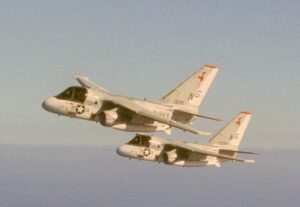
Anti-Submarine Aircraft Models
Anti-submarine aircraft, also known as
ASW aircraft, have played a crucial role in naval warfare by detecting and neutralizing submarine threats. The concept of using aircraft for
anti-submarine warfare dates back to World War I, when early attempts were made to spot and attack submarines from the air.
During World War II, the development of
submarine hunter aircraft gained momentum. Maritime patrol aircraft like the Consolidated PBY Catalina and the Lockheed PV-1 Ventura were equipped with depth charges and sonar buoys for
submarine detection. These aircraft were essential in countering the German U-boat threat in the Atlantic, significantly contributing to the Allied victory in the Battle of the Atlantic.
The post-war era saw advancements in
ASW operations with the introduction of more sophisticated
anti-submarine helicopters and fixed-wing aircraft. The Grumman S-2 Tracker, introduced in the 1950s, was one of the first purpose-built
anti-submarine aircraft designed for carrier operations. It featured advanced sonar systems and magnetic anomaly detectors (MAD) for
submarine tracking.
The Cold War period further emphasized the importance of
naval reconnaissance and
submarine deterrent capabilities. Aircraft like the Lockheed P-3 Orion and the Boeing P-8 Poseidon became the backbone of
anti-submarine warfare, equipped with cutting-edge
submarine detection technology and
anti-submarine sensors. These aircraft could launch torpedoes and depth charges, making them formidable assets in
submarine warfare.
Helicopters also played a significant role in
anti-submarine tactics. The Sikorsky SH-3 Sea King and its successors, such as the Sikorsky MH-60R Seahawk, provided flexible and rapid response capabilities for
ASW operations. Their ability to deploy dipping sonar and sonobuoys made them effective in locating and engaging enemy submarines.
In modern times, the integration of advanced technology, including unmanned aerial systems (UAS), has further enhanced the effectiveness of
anti-submarine aircraft. These advancements continue to evolve, ensuring the readiness and capability of naval forces in countering submarine threats.

